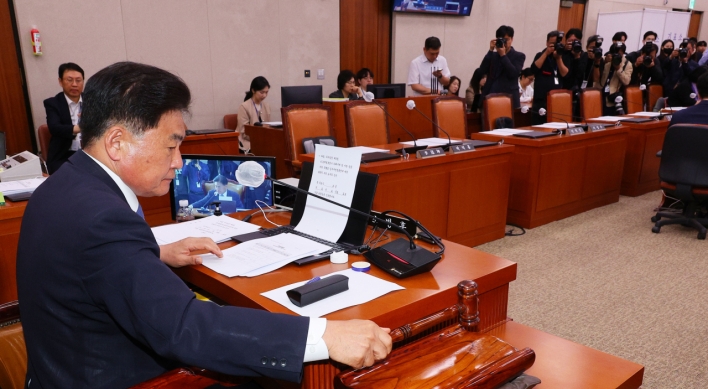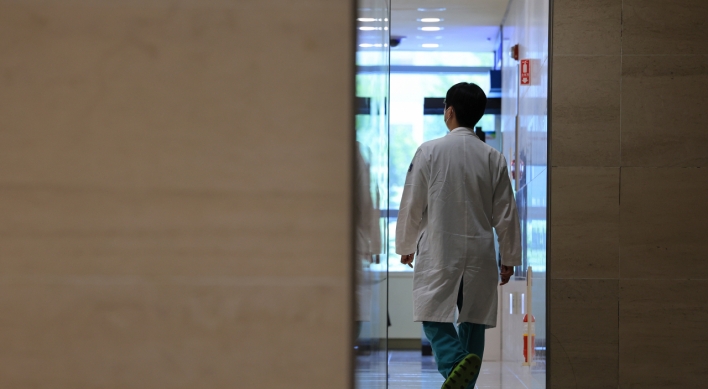[Robert J. Fouser] Gender-neutral approach to fertility rate
By Robert J. FouserPublished : March 12, 2021 - 05:31

After holding in a narrow range for last half of the 1980s and the 1990s, the fertility rate dopped below 1.3 children per woman in the 2000s and 2010s. It dropped to 0.98 in 2018, the lowest of any nation in the world, and to an even lower 0.84 in 2020. For the first time in history, the country had more deaths than births in 2020, causing the population of the country to decline for the first time. The COVID-19 pandemic may have affected the figures, but to date only 1,648 deaths have been attributed to the disease.
Since the 2000s, the government has tried to increase the fertility rate by offering financial incentives to couples to have more children and by improving social services for mothers. Most recently, President Moon Jae-in announced monthly aid of 300,000 won for every newborn up to the age of 1, and expectant couples will get a 2 million won cash bonus. Both measures are set to begin in 2022.
Though well intentioned, the governments latest efforts will have negligible impact on the fertility rate because they do not address the root cause of the decline. In the 50 years from 1960 to 2010, South Korea made the transition from poor rural society to wealthy urban society. The speed of the change leaves South Korea deeply divided by generation. Older generations remain rooted in a rural past that the generation now in its family formation years little understands.
The generational divide explains differences in attitudes toward gender. Rooted in the rural past, older generations view women primarily as wives, mothers, and homemakers. The weight of this gender-essentialist worldview is heavy, and it informs the pro-natalist policies that successive governments, including the current one, have adopted. The pro-natalist approach focuses heavily on supporting woman to give birth and care for children. Though packaged as forward-looking social welfare, it is a conservative, patriarchal approach.
For younger generations rooted in South Korea’s competitive urban society, child rearing is increasingly viewed as an unnecessary burden. Many young couples would rather focus on careers so as not to fall behind their cohort. Others that want children forego doing so out of fear of not being able to provide for the children.
The situation is exacerbated by structures built up by older generations that reinforce gender essentialism. South Korea is dominated by large companies and institutions that are dominated by men who work long hours. Among OECD countries, South Korea has the third highest percentage of male workers who work long hours a week. Similarly, Korean men rank second from the bottom in time spent daily on unpaid work, which includes housework, shopping, childcare, and other unpaid activities. Korean men spend just 49 minutes a day on unpaid work compared to 3.6 hours for women. Meanwhile, South Korea ranks first in the gender pay gap.
To change the paradigm, South Korean needs to move to a gender-neutral approach that enables couples to have as many children as they want. Such an approach should focus on two big, difficult issues: Gender equality and work-family balance.
For inspiration, South Korea should look toward Sweden and Denmark. Both nations rank near the top in gender equality and work-family balance. Beginning in the 1970s, both nations began adopting policies to promote gender equality and, from there, work-family balance.
As a result, Sweden and Denmark have saw their fertility rates bottom out in the 1980s before plateauing at a higher level since the 1990s. In both cases, the fertility rate in 2018 was higher than 1983, a quarter century earlier. Neither reaches the replacement level of 2.1, but immigration has kept the population growing slowly.
At key moments, South Korea has shown a remarkable ability to change to overcome challenges and remake itself. Now is such a moment. A nation cannot survive if its ages itself into oblivion. The first step toward moving forward is to recognize the limitations of gender-essentialist approaches.
Robert J. Fouser
Robert J. Fouser, a former associate professor of Korean language education at Seoul National University, writes on Korea from Pawtucket, Rhode Island. He can be reached at robertjfouser@gmail.com -- Ed.









![[Kim Seong-kon] Democracy and the future of South Korea](http://res.heraldm.com/phpwas/restmb_idxmake.php?idx=644&simg=/content/image/2024/04/16/20240416050802_0.jpg&u=)









![[Today’s K-pop] Zico drops snippet of collaboration with Jennie](http://res.heraldm.com/phpwas/restmb_idxmake.php?idx=642&simg=/content/image/2024/04/18/20240418050702_0.jpg&u=)